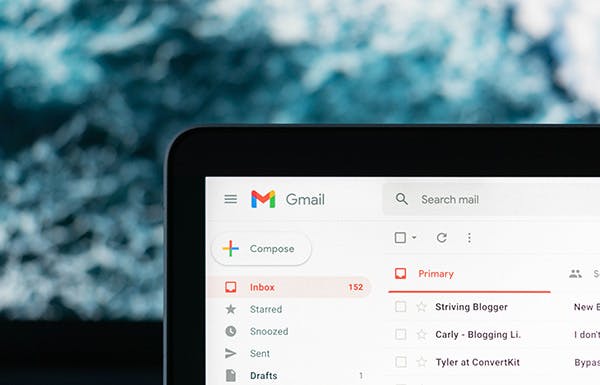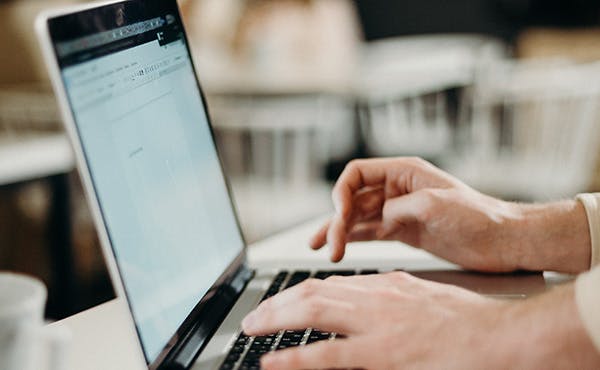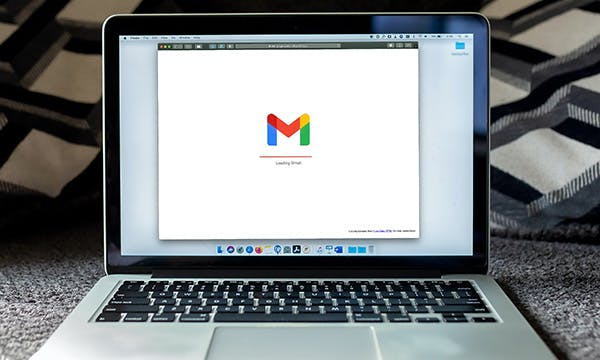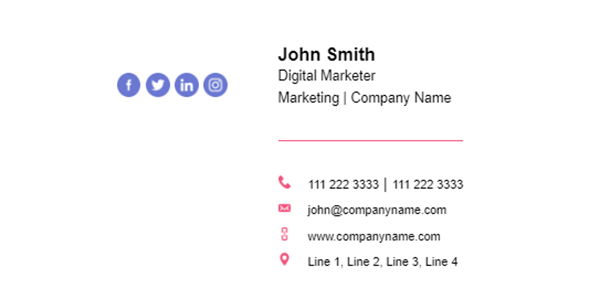10 Email etiquette rules for every professional

For many businesses across the globe, email is the most common form of communication. As organizations continue to expand and shift to digital platforms, we’re relying on email communications more than ever before.
But here's the thing: even though employees nowadays spend so much time glued to their inboxes, many still aren't quite sure about the ins and outs of using email properly. Here’s where email etiquette rules come in.
By following email etiquette rules, you and your team can steer clear of miscommunications and avoid any embarrassing mistakes that might not reflect well on you or your company.
What is email etiquette?
Email etiquette is a set of guidelines and practices that help us communicate effectively and respectfully through email. It covers different written communication aspects, including tone, grammar, clarity, and proper email format, all of which can vary depending on who you’re emailing and the specific situation at hand.
Whether it’s a professional email or a more personal one, practicing good email etiquette is key to making sure your messages come across clearly and respectfully. Knowing proper email etiquette rules also gives you confidence when writing emails for different situations.
If you want to make sure that your team is writing great emails, you can train them using online business writing courses or email etiquette training materials. Nowadays, you can find these sorts of email writing courses on online course platforms and course builders.
One example is EdApp. This powerful LMS and AI course creation platform offers two great course examples that you can try out: the Effective E-mail Communication course and the Effective Communication course.
Why is email etiquette important?
Email etiquette can make a big difference in your business communications and relationships. You see, communicating through email is a whole different ballgame compared to talking face-to-face. Just a single phrase taken out of context can cause serious misunderstandings or even damage your professional brand.
That's why it's so important to follow email rules. It helps you convey your message clearly and effectively. Plus, it brings along some fantastic benefits, including:
- Avoiding misunderstandings - Apart from being precise and clear, it’s important to use the appropriate tone in your emails so that your intentions are crystal clear and can’t be misinterpreted.
- Showing professionalism - Well-written emails that use the right language and show proper grammar and structure can help you leave a great impression on business partners, potential clients, and colleagues.
- Protecting you and your organization - Being mindful of the potential legal implications of email communication in the workplace can actually help you avoid getting tangled up in possible legal disputes.
To help you navigate the world of email etiquette with confidence, here’s a helpful list of email etiquette guidelines that can help you boost your email writing skills.
Email etiquette rule #1 - Use a clear and concise subject line
A clear subject line serves as a preview of your email's content and tells the recipient exactly what your email is about. It also helps them prioritize their responses. To make your email stand out, use a concise subject line that accurately reflects or summarizes the purpose of your message.

Instead of a generic subject line like "Meeting," opt for something more specific, such as "Request for Meeting: Project Update." By giving specific information upfront, you increase the chances of getting a quick and relevant response.
If you need a quick response to your email, you can spice up the subject line with words like "urgent" or "important." Just be mindful not to go overboard with these phrases, as using them too frequently might lose their impact.
Try EdApp at no cost and become an expert at writing emails with their email etiquette training materials!
Email etiquette rule #2 - Check the recipient and the spelling of their name
It's super important to make sure you're sending your email to the right person. Within a company's email system, it's easy to mistakenly send a message to the wrong person, especially when there are multiple people with similar or identical names.

So, before you click that send button, take a quick moment to double-check that you've got the correct recipient's email address. It'll definitely save you from any potential mix-ups or embarrassing situations.
Make sure you’re also getting your recipient's name right in your emails. It's a simple but powerful way to show respect and attention to detail. It only takes a moment to double-check those spellings.
Email etiquette rule #3 - Use CC and BCC the right way
Know when to use CC (Carbon Copy) and BCC (Blind Carbon Copy) to keep things transparent and respect privacy. Use CC when you want to keep others in the loop, but their direct input isn't necessary.

Use BCC when you need to include someone without revealing their email address to others. It’s also pretty handy because it lets you politely remove people from those long email threads and helps keep their inbox more organized. Using these features correctly helps avoid unintended consequences or breaches of privacy.
Email etiquette rule #4 - Keep the email body precise and focused
Keep your email short and to the point. Focus on the important information and avoid rambling. Long emails can be overwhelming and make it easy for the recipient to miss key details. A really good practice is to break up your email into short paragraphs, bullet points, or numbered lists, making it easier to read and understand.

While it's nice to sprinkle in some pleasantries, like well wishes, make sure to keep the main part of your message laser-focused on the essential information. That way, you strike a balance between being friendly and getting your point across efficiently.
Email etiquette rule #5 - Use a professional tone and proper language
When it comes to professional email writing, getting the right tone is key. You want to maintain a balance between being friendly and professional. That means avoiding the use of slang, abbreviations, or emoticons that could be unclear or might not come across as professional.

While it's great to be personable, it's important to check that your language remains polite and respectful. Steer clear of any offensive or confrontational words that could unintentionally create misunderstandings or tension.
A great tip is to read your email aloud or imagine yourself on the receiving end. This can help you gauge whether your message strikes the right balance of friendliness and professionalism.
Email etiquette rule #6 - Respond promptly
Try your best to respond to emails in a timely manner. Even a quick acknowledgement to let the sender know you received their email goes a long way. Delayed responses can lead to frustration and hinder effective collaboration. If you know you'll need more time to respond, set up an autoresponder to manage expectations.

When those emails start flooding in, it's helpful to prioritize them and figure out which ones need your quickest attention. One nifty trick is to create handy internal folders within your email provider. That way, you can keep things organized and easily spot the emails that require quick replies.
Email etiquette rule #7 - Be mindful when forwarding or replying to emails
When you find yourself forwarding or replying to emails, it's important to be mindful of who really needs to be included in the conversation. Take a moment to consider which recipients are essential for the current discussion and remove any unnecessary individuals from the recipient list.

Additionally, it's a good practice to trim away any irrelevant email threads or private conversations that aren't directly related to the topic at hand. Streamlining the content keeps the email focused and prevents any confusion or distraction caused by unrelated information.
To make your responses even clearer, use proper formatting techniques. Indent quoted text or use inline comments to indicate which parts of the email you're specifically addressing. This way, it's crystal clear to everyone involved which aspects of the conversation you're responding to, which helps maintain clarity and avoid any potential mix-ups.
Email etiquette rule #8 - Double check attachments
Consider the relevance and necessity of attachments for the recipient. Before attaching any files, ask yourself if they truly add value to the email and contribute to the discussion. By being mindful of this, you can save both your time and the recipient's time.

If you do need to include attachments, it's a good practice to compress large files whenever possible. This helps keep your email's size manageable and prevents it from taking up excessive storage space in the recipient's inbox. Compressing files not only makes it easier to send but also shows consideration for the recipient's inbox space.
To give additional context, it's helpful to include a brief description of the attachment within the body of the email. This way, the recipient knows what to expect and can easily understand the purpose or content of the attachment before opening it.
Email etiquette rule #9 - Proofread and edit before sending
Before hitting that send button, take a moment to proofread and edit your email. Check for any grammar or spelling mistakes, and make sure your message is clear. To go the extra mile, consider reading your email out loud. Doing so helps you identify any awkward phrasing, unclear sentences, or areas where the tone may not come across as intended.

Alternatively, you can ask a trusted colleague or friend to give your email a quick review. Fresh eyes can often catch things that you might have missed. A well-written and error-free email shows that you pay attention to detail and adds to your credibility.
Email etiquette rule #10 - Add a signature
Don't forget to add an email signature to your professional emails! This can act as your digital business card. Just include some basic information about yourself, including your name, job title, company, and even your phone number and address if you prefer.

That way, people will have all the details they need to get in touch with you. Plus, aside from adding a personal touch, it also shows professionalism and reflects well on your organization.
Author
Hannah Malmstrom
Hannah is an eLearning writer who dedicates her time to creating in-depth content about SC Training (formerly EdApp), a multi-award-winning mobile LMS that has pioneered one of the most progressive microlearning solutions on the market. She brings years of writing experience in the online software industry to her current role in the eLearning sphere. When she's not writing, you can find her catching up on new anime series or re-reading her favorite novels.
